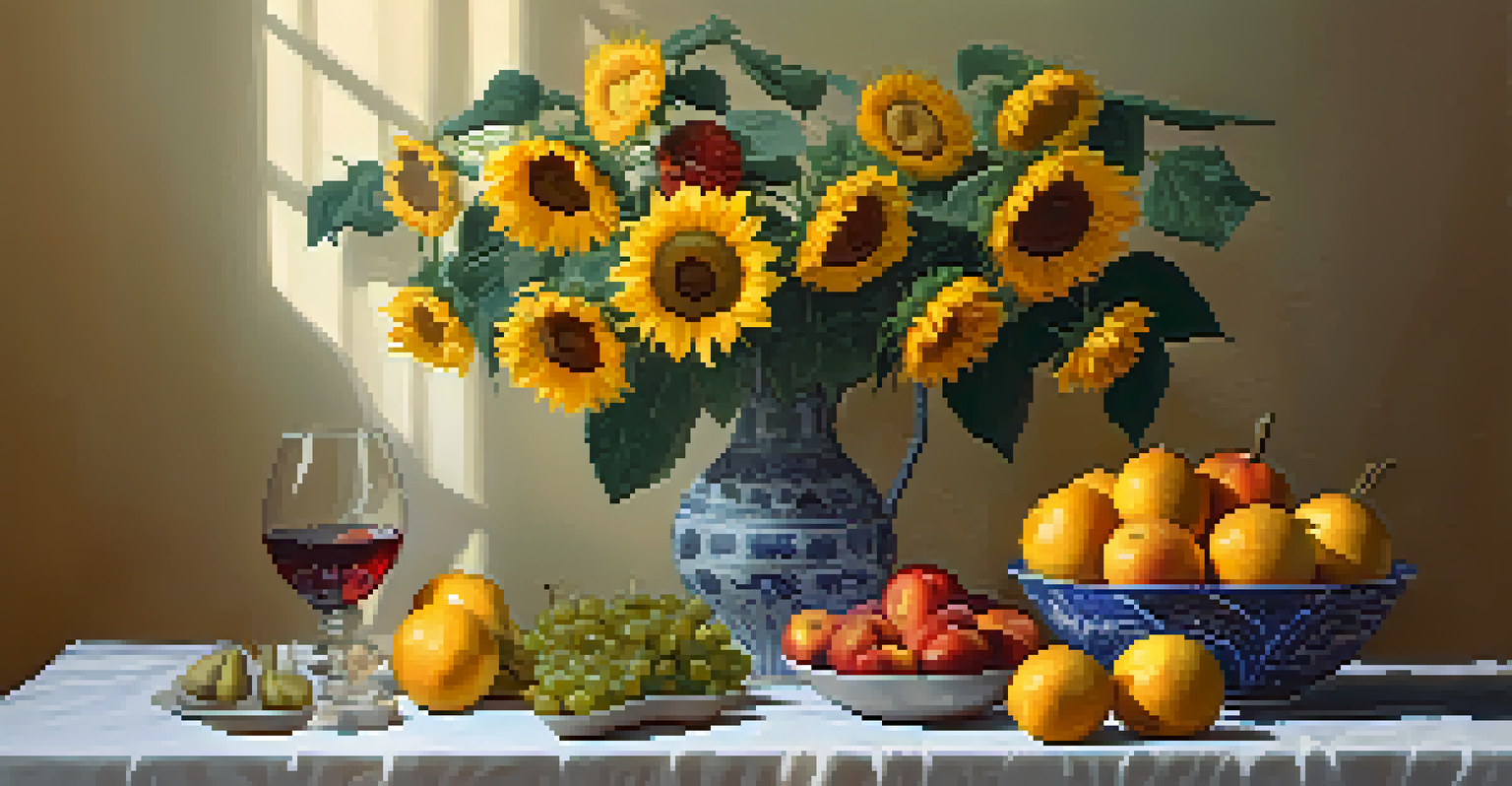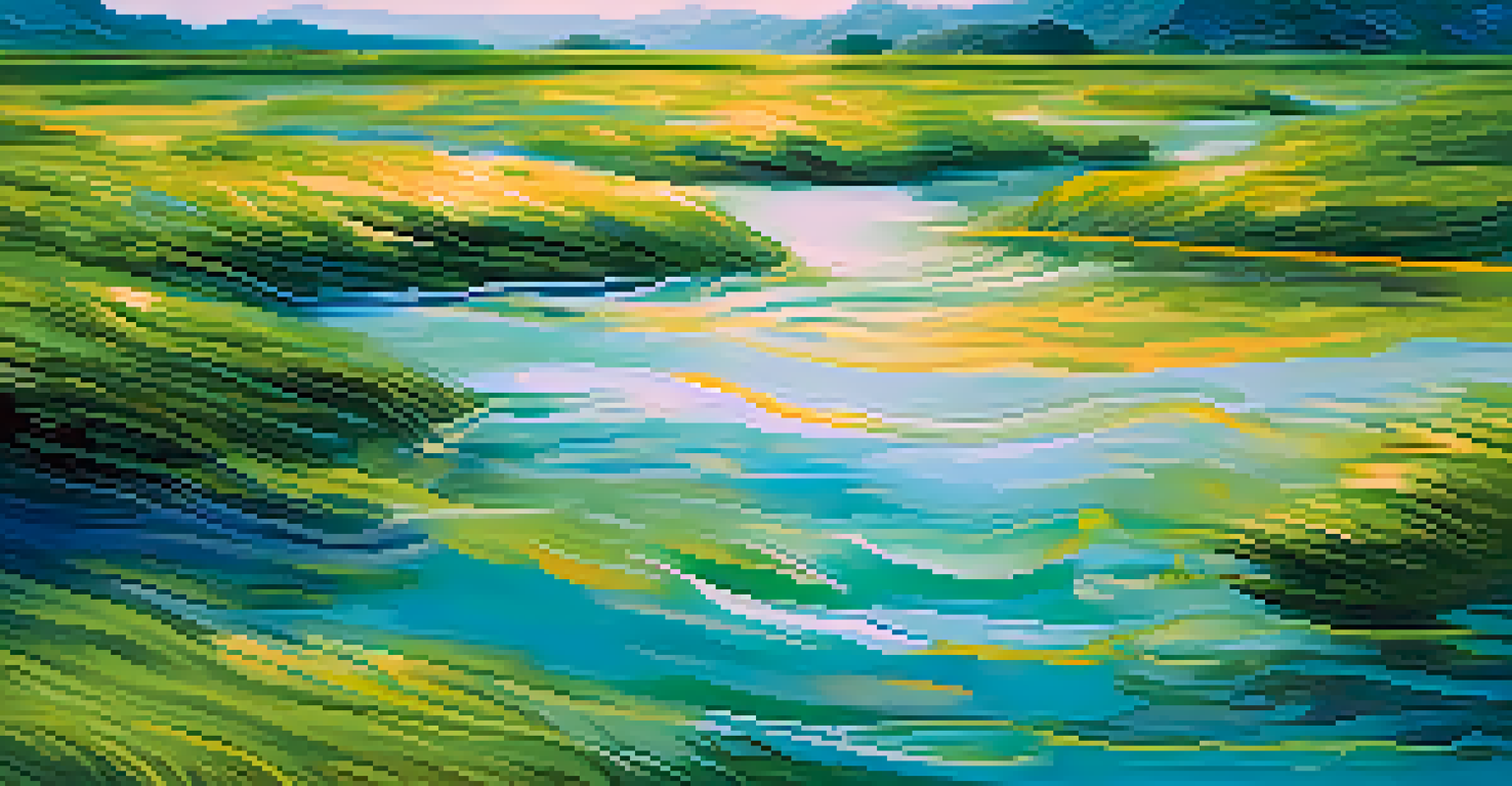The Influence of Art History on Contemporary Digital Artists Today

Understanding the Roots of Digital Art
Digital art may seem like a new frontier, but its roots are deeply embedded in art history. Artists have always experimented with new mediums, from cave paintings to oil on canvas, and now to pixels on screens. This evolution reflects the enduring quest for expression and connection through visual means. As digital artists create today, they often draw inspiration from the rich tapestry of styles and movements that have come before them.
Art is not what you see, but what you make others see.
By understanding different art movements, such as Impressionism or Surrealism, contemporary digital artists can better appreciate the techniques and concepts that have shaped the visual arts. For example, the way Impressionists captured light and color can influence how digital artists approach color palettes and lighting in their work. This dialogue between past and present fosters a deeper engagement with their craft.
Moreover, digital tools allow artists to reinterpret historical techniques in innovative ways. For instance, a digital artist might use software to mimic the brushstroke techniques of Van Gogh while adding a modern twist. This fusion of old and new not only pays homage to art history but also pushes the boundaries of what art can be.
The Role of Iconography in Modern Creations
Iconography, the use of symbols and imagery to convey meaning, has been a fundamental aspect of art for centuries. Today, digital artists often incorporate historical symbols into their works, creating a rich layer of meaning that resonates with viewers. By weaving these symbols into their art, they connect contemporary themes to historical narratives, creating a dialogue across time.

For example, a digital artist might use the motif of the skull, which has been prevalent in art from the Renaissance to modern art, to explore themes of mortality and existence. This not only reflects a deep understanding of art history but also invites the audience to engage with these timeless questions. Such connections can evoke emotional responses, allowing viewers to find personal significance in the work.
Digital Art’s Historical Roots
Digital art draws inspiration from historical art movements, allowing contemporary artists to reinterpret traditional techniques and concepts.
Furthermore, the accessibility of digital tools means that artists can remix and reinterpret these icons in ways that challenge traditional representations. This not only revitalizes historical imagery but also encourages a broader audience to engage with art history in a meaningful way. The result is a dynamic interplay of past and present that enriches the contemporary art landscape.
Techniques Borrowed from Traditional Art Forms
Many contemporary digital artists adopt techniques from traditional art forms, blending them into their digital creations. Techniques like layering, texture application, and color theory are just as relevant in digital art as they are in oil painting or printmaking. This cross-pollination of methods allows digital artists to produce work that feels both familiar and innovative.
Every artist dips his brush in his own soul, and paints his own nature into his pictures.
For instance, the technique of chiaroscuro, which uses strong contrasts between light and dark, has been a hallmark of classical painting. Digital artists can apply this technique using software to create depth and drama in their compositions. By borrowing from the past, they not only enhance their visual storytelling but also demonstrate the timelessness of these artistic principles.
Moreover, the ability to experiment with these techniques digitally opens up new avenues for creativity. Artists can easily manipulate and adjust their work in ways that traditional artists could only dream of, allowing for a more exploratory and iterative process. This blend of old techniques with new technology results in a vibrant and evolving art form that honors its predecessors while paving the way for the future.
Influence of Cultural Movements on Digital Art
Cultural movements, such as Feminism or Environmentalism, have had a significant impact on art throughout history. Today, digital artists often respond to these movements, using their work to comment on contemporary social issues while drawing from historical contexts. This blending of cultural critique with artistic expression fosters a deeper understanding of both art history and current events.
For example, a digital artist might create a piece that highlights climate change, using visual elements that reference historical art about nature and human impact. This not only honors the past but also engages viewers in an urgent conversation about our future. The interplay between art and activism continues to be a powerful force in shaping contemporary digital art.
Iconography Connects Past and Present
Modern digital artists incorporate historical symbols in their work, creating meaningful connections between contemporary themes and art history.
Additionally, the global reach of digital platforms allows artists from diverse backgrounds to contribute their perspectives to these cultural dialogues. This inclusivity enriches the art scene, creating a melting pot of ideas that reflect a more nuanced understanding of both art history and current cultural narratives.
The Impact of Technology on Artistic Expression
Technology has revolutionized the way artists create and share their work. From digital painting software to 3D modeling tools, contemporary digital artists have access to an array of resources that expand their creative possibilities. This technological evolution has transformed the landscape of art, making it more accessible and democratized than ever before.
For instance, artists can now use virtual reality to create immersive experiences that challenge traditional notions of space and interaction. This not only allows for new forms of storytelling but also invites viewers to engage with art in a participatory way. Such innovations can be traced back to the avant-garde movements of the past, which also sought to redefine the viewer's experience.
Moreover, the rapid advancement of technology means that digital artists must continuously adapt and evolve their skills. This constant learning process not only keeps the art form fresh and exciting but also ensures that historical influences are reinterpreted through a contemporary lens. The result is a dynamic art scene that honors tradition while embracing the future.
Preserving Art History Through Digital Mediums
Digital art serves as a powerful tool for preserving and sharing art history. As museums and galleries digitize their collections, contemporary artists have unprecedented access to historical works, allowing them to study and draw inspiration from the masters. This digital archiving helps keep art history alive and relevant in a rapidly changing world.
Additionally, digital platforms enable artists to create tributes or reinterpretations of classical works, breathing new life into old masterpieces. For example, a digital artist might create a modern reinterpretation of a famous painting, encouraging viewers to see it through a contemporary lens. This not only reinvigorates interest in art history but also invites dialogue about its ongoing relevance.
Technology Transforms Artistic Expression
Advancements in technology provide digital artists with new tools and platforms, reshaping how art is created and shared while honoring its historical roots.
Furthermore, the internet allows for global sharing of these reinterpretations, fostering a community of artists and art lovers who engage with history in new ways. This collaborative approach not only democratizes art appreciation but also encourages a deeper understanding of how past works influence current trends and ideas.
The Future of Digital Art and Its Historical Roots
As digital art continues to evolve, it remains intricately linked to its historical roots. The dialogue between past and present is essential for the growth of this art form, as artists draw inspiration from the vast array of styles, techniques, and themes that have come before. This interconnectedness ensures that the lessons of art history are not lost but instead serve as a foundation for future exploration.
Looking ahead, we can expect to see even more innovative uses of technology that push the boundaries of artistic expression. As new tools emerge, digital artists will continue to experiment and redefine what it means to create art. This evolution will likely lead to exciting new forms that challenge our understanding of both art and its history.

Ultimately, the influence of art history on contemporary digital artists is a testament to the enduring power of creativity. By embracing their heritage while forging new paths, these artists contribute to a vibrant and ever-changing art landscape that honors the past while embracing the future.